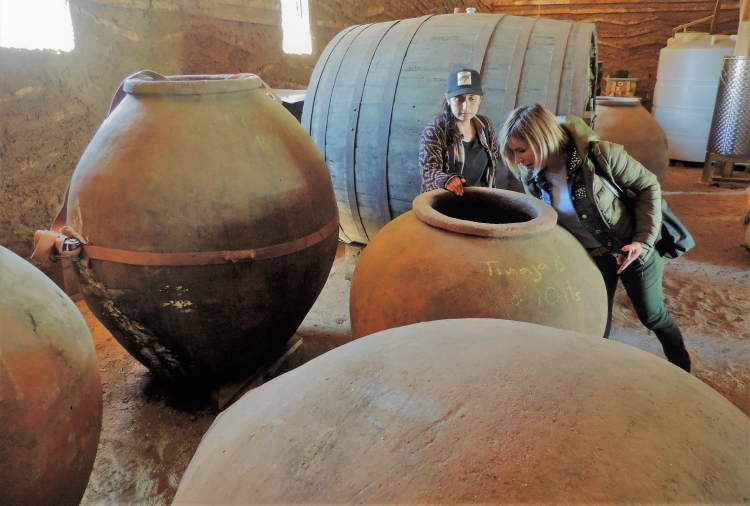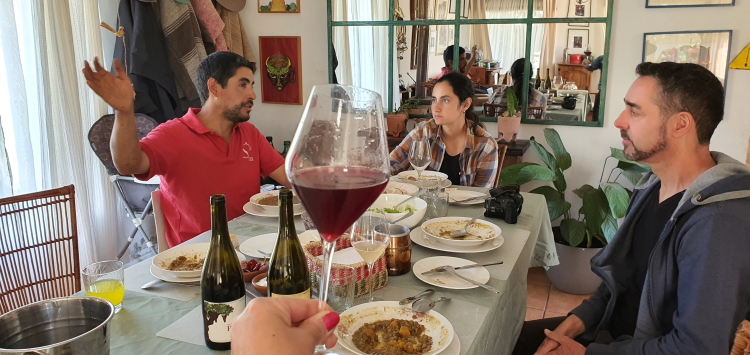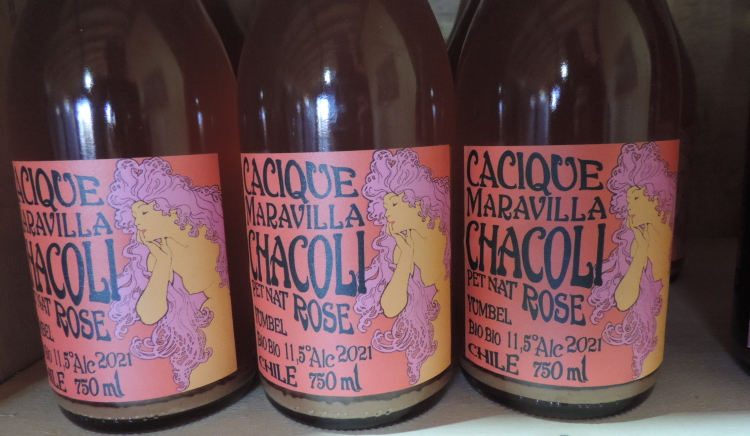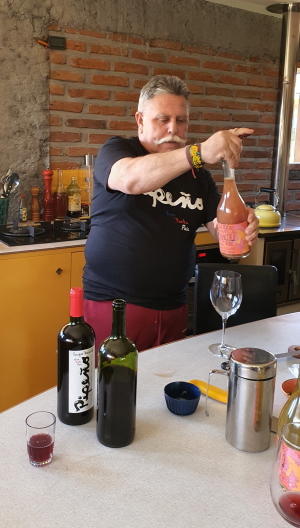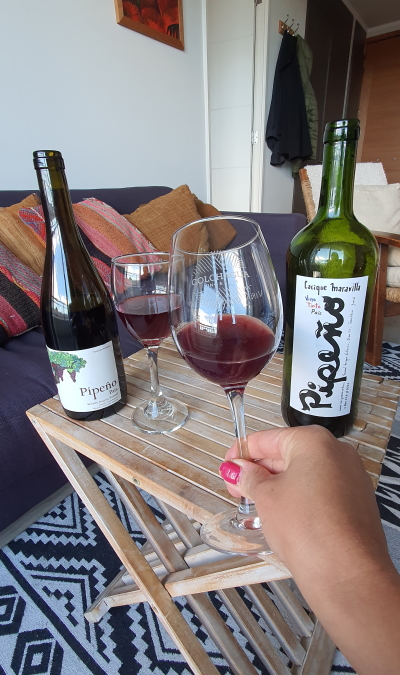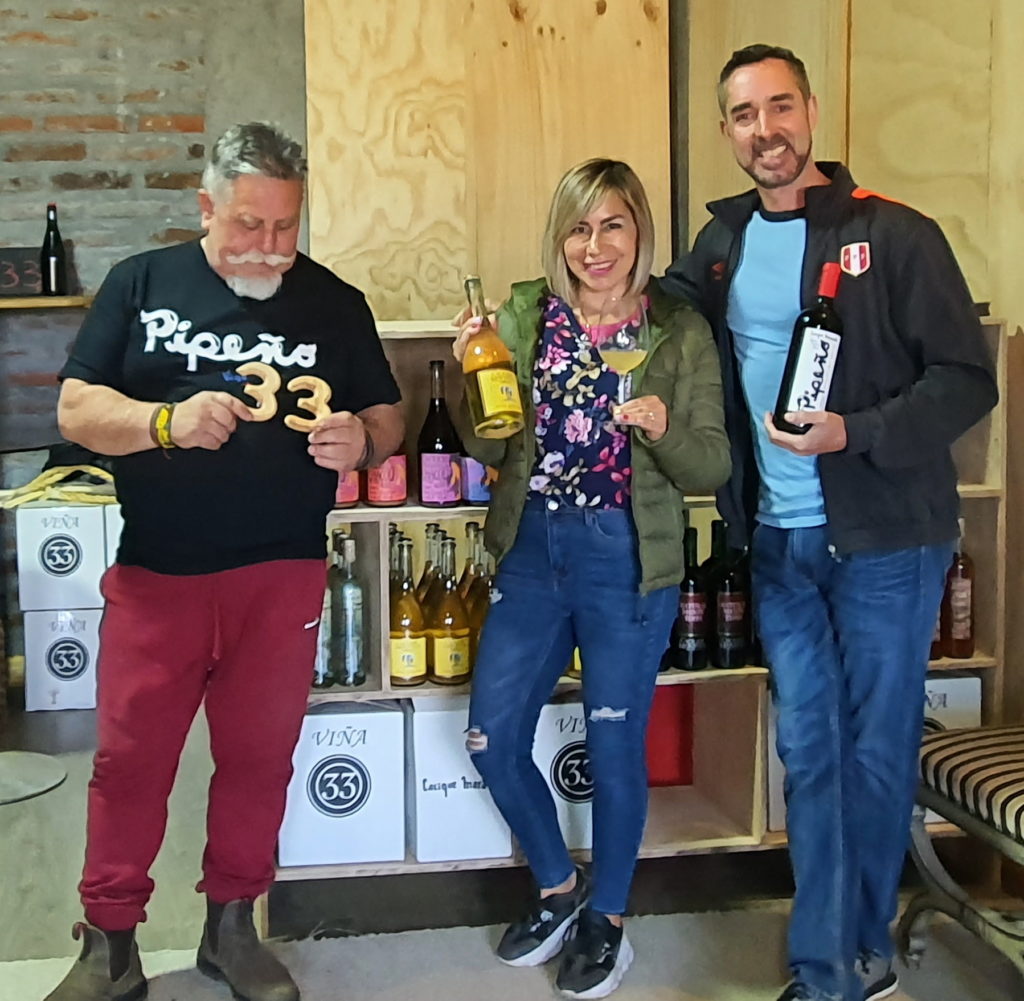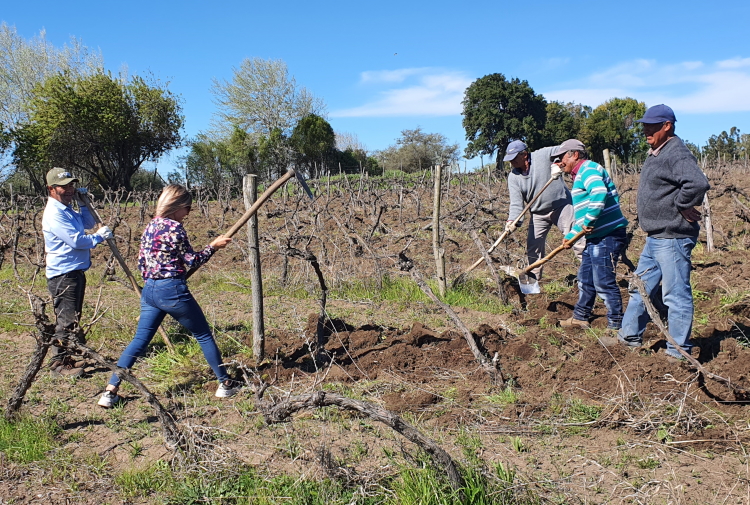Pais is not a grape we knew anything about before we moved to Chile. The Spanish conquistadors brought it here from the Canary Islands meaning it has been growing in Chile for hundreds of years so why hadn’t we tried this wine before we got here?
It is only in recent years that there have been concerted efforts to lift Pais back onto the perch it occupied before French vines landed in Chile and knocked it off. The grape´s reputation has been downgraded and it is much derided by Chileans who only associate it with the Pipeño style of wine. Pipeño is made from Pais but is seen by the average Chilean as a simple, low-quality product made artisanally and only drunk by poor, rural people. Such prejudices are slowly changing due in no small part to the efforts of dedicated winemakers on a new mission.
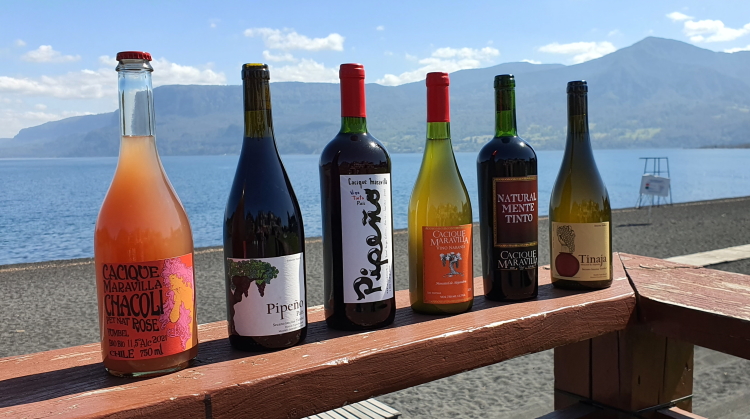
Volcanic beach photoshoot of our bottles from Yumbel in Pucon on the shores of Lago Villarica!
Low-intervention and natural winemaking are very much on the up worldwide, and the way Pais is grown and vinified by a growing number of new Chilean winemakers meshes perfectly with these sustainable approaches. Recently we visited a hotbed of Pais production in and around Yumbel and spent time with two passionate owner/winemaker couples to learn more.
Yumbel is a small town in the Bio Bio region, some 500 km south of Santiago. Many of the gently rolling hills of the area are covered in old vines, many are 100, 150 or over 200 years old, and most are head-trained and dry-farmed. When we visited Mauricio and Daniela to see their new winery, called Estacion Yumbel, we were taken on a small tour around the local area by Daniela. In just a 3 or 4 km loop of narrow dirt roads, there were dozens of head-trained, old vine Pais and Muscat of Alexandria vineyards scattered over the hills in the area.
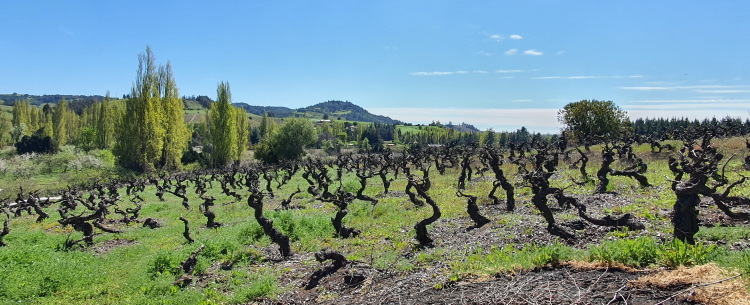
150-year-old (and older) head-trained Pais and Muscat of Alexandria vines in the hills all over Bio Bio
As trailblazers such as Mauricio Gonzalez open the way, other local vineyard owners are starting to take notice and rescue abandoned vineyards to produce new wines. Trees and undergrowth are being cleared away to reveal twisted old vines and untended parcels are being tidied up and pruned back. Where people´s grandfathers may have just sold their grapes, the current generation are opting to make wine. Dry farming, the use of concrete lagars, manual zaranda de-stemmers, and native Rauli wood foudres are common.
With very little use of sulfur, and no other treatments or corrections at all whether in the vineyard or the winery, there is a risk of spoilage and variation in wine quality of course, but the Bio Bio terroir has a very low disease and pest pressure we are told. Mauricio is very proud of not interfering with the wine and just letting it do its thing with a helping hand.
The passion and drive of winemakers always make me smile and I often feel jealous that someone can enjoy their craft so much! It is not like I hate my work of course, but Mauricio let his lunch go completely cold while he waxed lyrical about the local terroir and his winemaking projects. The man is softly spoken compared with some characters we have met but he is brimming with knowledge and enthusiasm.
The new winery that Mauricio and Daniela are building is not yet finished but when it is they will have facilities for wine tourist visitors, so we will certainly be visiting with clients. As you can see from the photos they have a Rauli fermenter, Rauli Pipes (Pipas = Pipeño), French oak barrels, amphorae and also plastic tanks, so they have lots of fermenting and ageing material options. The photo below shows a large Rauli open-top fermenter, and they are actively scouring the countryside to recover more amphorae. You can see above that one of these requires a strap to prevent it from cracking more, so some of them will need some restoration work.
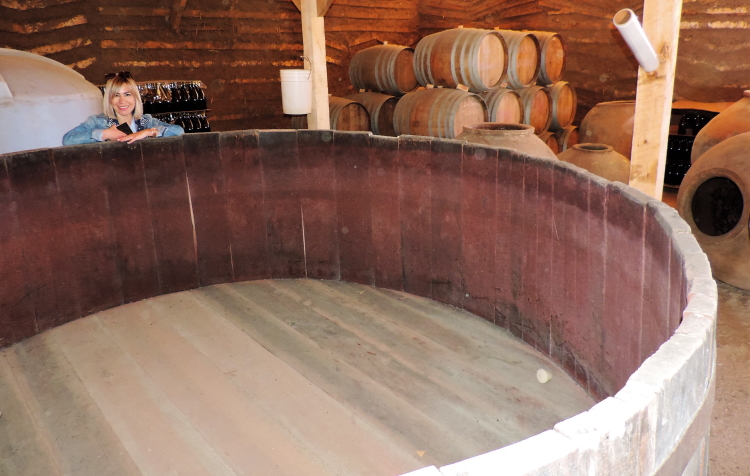
We have to come back and see this Rauli fermenting vat filled with bubbling Pais!
Mauricio farms around 4 hectares of Pais, Malbec, and Muscat of Alexandria, from old bush vines, which have adapted to the drought-ridden volcanic soils of the Secano Interior. Across his 5 wines he produces around 20,000 bottles per annum, and around half of that is Pipeño from Pais. He creates a skin-contact amphora wine from his Moscatel and leaves it on its skins for 5 months in 100-year-old amphorae, unfined and unfiltered.
Our visit the next day was to Cacique Maravilla to meet Manuel Moraga and his wife Paola. Manuel is a bit of a character with a tremendous moustache and visitors will be royally entertained. Manuel is the latest member of the family to farm this land which was first planted in 1776. The appearance of the number 33 on corks is a reminder that this winery was the 33rd to be registered in Chile. One of the perks of holding onto the land that long has been the preservation of old vines, some of the Pais vines are over 250-years-old.
One of the soundbites we remembered after the visit was Manuel saying how a standard 750 ml bottle is just not big enough to fully enjoy his Pipeño, at lunch with some friends for example. With an alcohol of 12.9%, light body and its tangy, easy-drinking style it would be far too easy to finish the standard bottle off too quickly, so Manuel produces it in 1 L formats.
Our visitors will love this visit, wandering the ancient vines with Manuel and Paola, sipping their creations and being regaled with stories. Also, in the near future, there will be a chance of full immersion while staying on-site as there are plans to construct two or three guest rooms right above the winery. While guests are here they will be able to sample a range of wines as Manuel has chosen to produce Pet Nats and still wines, plus his best selling traditional-style Pipeño. Opening Pet Nats can be an explosive issue if not chilled enough, you can see on our Instagram.
Manuel has a larger production than Mauricio, having some 16 hectares under vine. But he has the same low-intervention approach and his wines are unfined and unfiltered. His very old vines are complemented by some 25-year-old Cabernet Sauvignon vines, which are mere infants compared with the great, grandfather Pais vines! The Cacique Maravilla red blend of Cab Sav, Malbec and Pais is an interesting one.
When you are visiting wineries and vineyards there is always a chance that you could get involved in some hands-on work, and as you can see above, Malka tried her hand at clearing undergrowth from the rows. Horses may be used to plough these old vineyards but as growers take the quality of their fruit more seriously more and more manual labour is being employed as less damage occurs to the vines.
You might choose to visit Maule or Itata while you are down in the south? Let us know if you are thinking of this. Whatever time of the year you visit there is always something to see in the winery or the vineyard, and you are always assured of a warm welcome and a passion for Pais!
